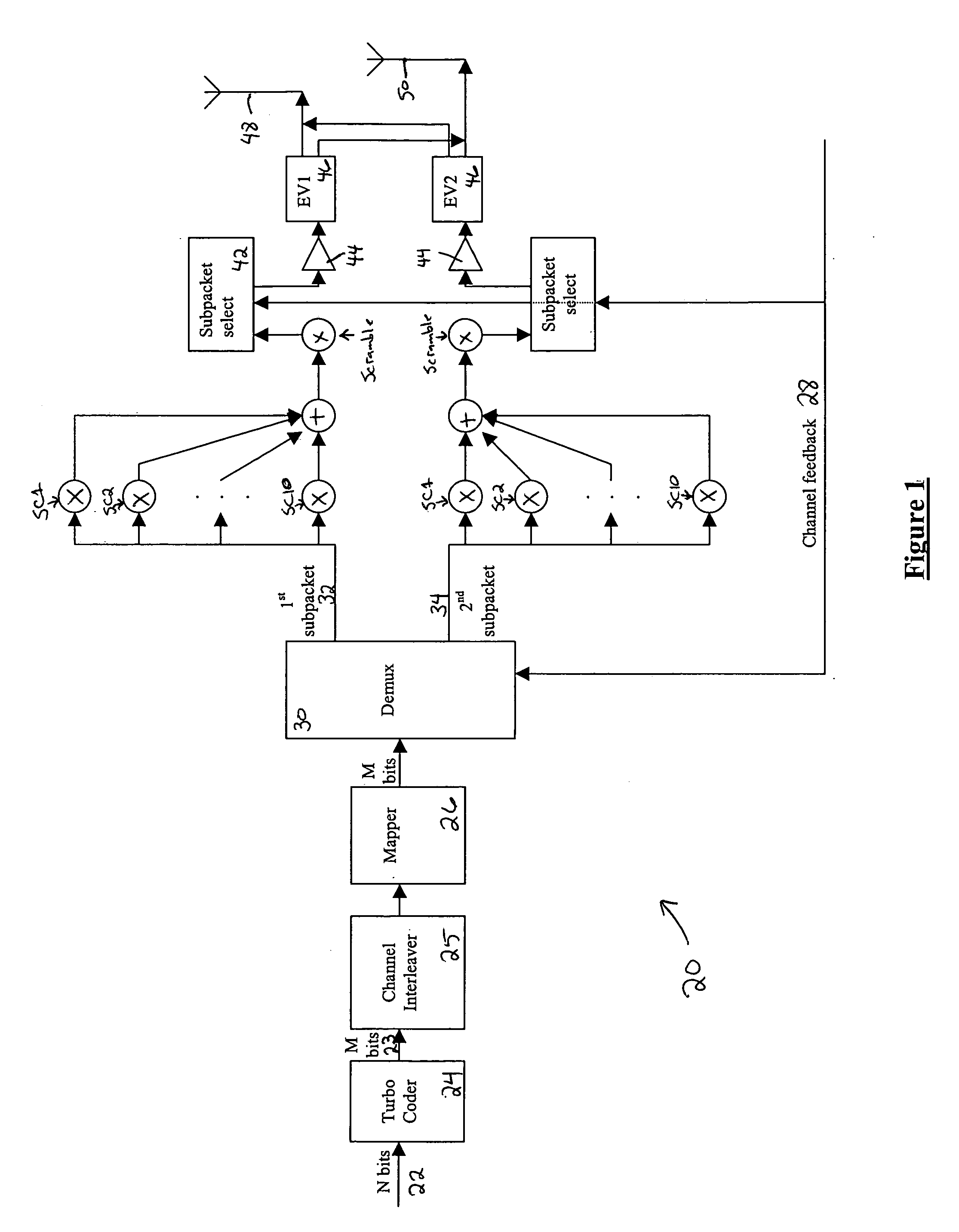Flexible rate split method for MIMO transmission
a rate split and transmission method technology, applied in the field of multi-input/multi-output (imo) communication system, can solve problems such as and achieve the effect of inability to maximize ra
- Summary
- Abstract
- Description
- Claims
- Application Information
AI Technical Summary
Benefits of technology
Problems solved by technology
Method used
Image
Examples
Embodiment Construction
[0017] The present invention improves upon the prior art by encoding the streams across both space and time, and dividing the systematic bits among streams based on knowledge of the channel parameters. This knowledge may come from a receiver over an uplink channel, from measurement of the uplink channel by the receiver, or both. Other sources of channel quality measurement may also be employed. The present invention is compatible with the packet data channel (F-PDCH) of the 1×EV-DV standard, commonly known as cdma2000 release C, and described below. For a 1×EV-DV application, the uplink channel may be the reverse channel quality indicator channel (R-CQICH) or the reverse acknowledgement channel (R-ACKCH).
[0018] CDMA, or code-division multiple access, is a highly efficient use of radio spectrum based on a spread spectrum technique by which a narrow band voice or data signal is multiplied over a relatively wide band by a spreading code, generally termed a Walsh-Hadamard code or a Wal...
PUM
 Login to View More
Login to View More Abstract
Description
Claims
Application Information
 Login to View More
Login to View More - R&D
- Intellectual Property
- Life Sciences
- Materials
- Tech Scout
- Unparalleled Data Quality
- Higher Quality Content
- 60% Fewer Hallucinations
Browse by: Latest US Patents, China's latest patents, Technical Efficacy Thesaurus, Application Domain, Technology Topic, Popular Technical Reports.
© 2025 PatSnap. All rights reserved.Legal|Privacy policy|Modern Slavery Act Transparency Statement|Sitemap|About US| Contact US: help@patsnap.com



